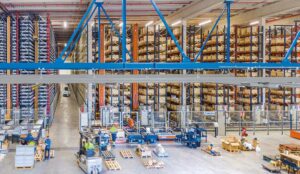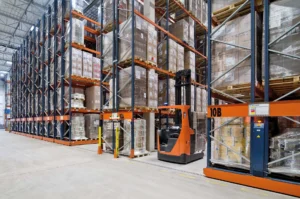In the world of storage and logistics, space is often at a premium. Whether you’re running a warehouse, a retail store, or any facility with storage needs, making the most of available space is crucial. That’s where mezzanines come into play. These versatile structures offer a smart solution for doubling your storage space without the need to expand your footprint.
Unlocking the Potential of Mezzanines
Mezzanines are elevated platforms or floors that are installed between the main floor and the ceiling or roof of a building. They provide an additional level of usable space, effectively doubling the storage capacity of your facility. Here’s how mezzanines can work wonders for your storage needs:
Vertical Expansion
One of the most significant advantages of mezzanines is their ability to make use of vertical space. Instead of expanding horizontally, which may not always be possible, mezzanines allow you to tap into the unused vertical area of your facility. This is especially valuable in warehouses with high ceilings or retail spaces where maximizing floor space is critical.
Cost-Effective Storage
Building an entirely new storage facility or expanding an existing one can be a costly endeavor. Mezzanines offer a cost-effective alternative, allowing you to create additional storage space without the high construction expenses associated with ground-level expansions. They also minimize the need for new land acquisition, making them an eco-friendly choice.
Customization
Mezzanines can be customized to meet your specific storage requirements. Whether you need more shelving for inventory, additional office space, or a dedicated area for packing and shipping, mezzanines can be designed and configured to match your needs precisely. This versatility is a key selling point for businesses with unique storage demands.
Efficient Workflows
Mezzanines aren’t just about storage; they can also improve the efficiency of your operations. By creating dedicated areas for specific tasks or departments, you can streamline workflows. For instance, a mezzanine can house a quality control station, freeing up space on the main floor for other activities.
Enhanced Organization
Mezzanines provide an opportunity to enhance the organization of your storage space. You can use them for storing less frequently accessed items or for segregating products based on categories or seasons. With proper labeling and organization, you’ll reduce the time spent searching for items, improving productivity.
Easy Installation
Compared to traditional construction projects, mezzanines can be installed relatively quickly. This minimizes disruption to your daily operations and allows you to start benefiting from the added storage space sooner.
Practical Tips for Effective Mezzanine Storage
To make the most of your mezzanine storage, consider these practical tips:
Assess Your Needs:
Begin by assessing your storage requirements and goals. Determine what items you need to store, how frequently they’re accessed, and what type of storage solutions (shelving, racks, bins, etc.) are best suited for your needs.
Choose the Right Configuration:
Work with a mezzanine provider to choose the right configuration for your space. Consider factors like load-bearing capacity, access points (stairs, lifts, or conveyors), and safety features.
Safety First:
Safety should be a top priority when designing and using mezzanine storage. Ensure that your mezzanine meets all safety regulations and standards, including railings, guardrails, and appropriate weight capacities.
Organize and Label:
Once your mezzanine is in place, organize items logically and label everything clearly. Proper labeling reduces the risk of confusion and streamlines inventory management.
Regular Maintenance:
Maintain your mezzanine and storage systems regularly to ensure they remain in good condition and safe to use. Perform inspections and repairs as needed.
FAQ
Q1: Are mezzanines suitable for both industrial and commercial spaces?
Yes, mezzanines are versatile and can be used in various settings, including warehouses, factories, retail stores, offices, and more.
Q2: Can mezzanines be expanded or modified in the future to accommodate changing storage needs?
Yes, mezzanines can be expanded, reconfigured, or even relocated to adapt to changing storage requirements.
Q3: Are there weight limitations for items stored on mezzanines?
Yes, mezzanines have weight limits based on their design and load-bearing capacity. It’s crucial to adhere to these limits to ensure safety.
Q4: How long does it typically take to install a mezzanine?
Installation times can vary depending on the size and complexity of the mezzanine and any customization required. However, mezzanines are generally faster to install than traditional construction projects.
Q5: Are there safety regulations that apply to mezzanine installations?
Yes, safety regulations and standards govern the design and installation of mezzanines. Compliance with these regulations is essential for ensuring the safety of workers and users.
Q6: Can mezzanines be used for purposes other than storage?
Absolutely. Mezzanines can serve as additional workspace, offices, break areas, and more, depending on your specific needs.
In conclusion, mezzanines offer a practical and cost-effective solution for doubling your storage space without the need for expanding your facility’s footprint. Whether you’re looking to optimize storage in a warehouse, retail space, or any other environment, mezzanines provide a versatile and customizable option to meet your needs. By assessing your requirements, choosing the right configuration, and prioritizing safety and organization, you can unlock the full potential of mezzanine storage and enhance the efficiency of your operations.






